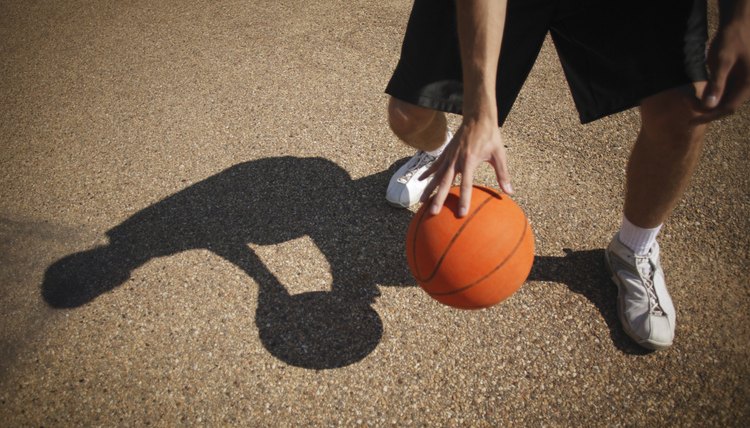Basketball Inbounding Rules

At certain points during a basketball game, a player standing out of bounds attempts to pass the ball to a teammate who is in the legal playing area so play can resume. Many people refer to this action as "inbounding" the ball. Basketball players must follow a set of rules governing how to inbound the ball.
Inbounding Instances
Inbounding the ball is a requirement based on the conclusion of a number of actions that occur during the course of a game. A player must inbound the ball after a player on the opposing team makes a basket. He must also do this after a successful free throw, provided that the made free throw was the final free throw attempt allotted to the shooter. Fouls not resulting in free throws and turnovers call for the ball to be inbounded, unless the turnover is a steal. After technical free throws, the shooting team inbounds the ball from midcourt.
Inbound Execution and Defense
The team inbounding the ball may have only one player out of bounds. This player cannot score a basket directly from out of bounds; he must pass the ball to a teammate in bounds. The opposing team cannot go out of bounds to impede the throw but may stand in front of the thrower and guard players trying to receive the ball. An inbound play may also include a third player and incorporate a pass. For example, the thrower may pass the ball to player 2. As the opposing team attempts to block player 2, player 3 can retrieve the ball and go for a layup.
Five-Second Rule
The player on the team inbounding the ball has five seconds to pass the ball to a player in bounds. A referee will stop the five-second count when the ball leaves the inbounding player's hands. The inbounding player will incur a five-second violation if she does not get rid of the ball during that time; the other team then assumes possession of the ball for an inbounds play.
Moving With the Ball
The player inbounding the ball has a three-foot area in which he can move his feet to find an open teammate on an inbounds play. He commits a turnover if he leaves the three-foot area before he throws the ball inbounds. Following a made basket, a player may run the length of the baseline to throw the ball to a teammate.
Writer Bio
Kyle Glazier has been writing since 2007. He frequently writes about health and legal issues and has written for publications in Arizona and Colorado, including the "East Valley Tribune" and "American Cowboy Magazine." He holds a Bachelor of Arts in English from Arizona State University and is pursuing a Master of Arts in journalism from the University of Colorado.
